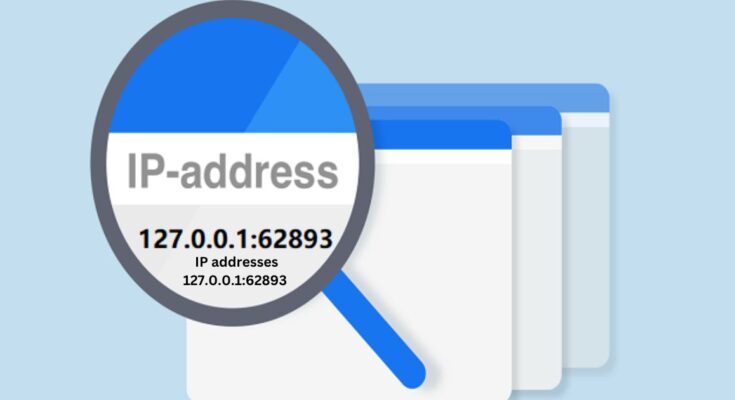In the vast networking world, IP addresses allow computers and servers to communicate. One such address is 127.0.0.1, commonly known as the loopback address, often paired with a specific port number like 62893. Understanding how these components work together is vital for developers, network administrators, and tech enthusiasts. This article explores the significance of 127.0.0.1:62893 and its applications in modern networking.
What is 127.0.0.1?
The IP address 127.0.0.1 is the default loopback address used to refer to the host system. When you use this IP, you tell your computer to communicate with itself. This is essential for running tests and network diagnostics without reaching external networks.
Importance of Loopback Addresses
Loopback addresses allow a system to bypass physical network interfaces, ensuring traffic stays within the device. This is a valuable tool for network engineers and software developers.
Understanding Port 62893
In networking, a port serves as a communication endpoint. Port number 62893 is just one of many applications that are used to send and receive data. Pairing an IP address with a port number establishes a more precise communication channel.
How Ports Work in Networking
Each service or application running on a device typically uses a unique port number. For instance, web servers commonly use port 80 for HTTP traffic.
Role of 127.0.0.1:62893 in Networking

When 127.0.0.1 is combined with port 62893, it directs the traffic to a specific service running locally on your device. This could be used for development, testing, or running local servers without involving external networks.
Common Use Cases
One widespread use of 127.0.0.1:62893 is in web development, where developers run local instances of websites or applications to test them before deploying them to a live server.
Localhost vs. External IPs
While localhost (127.0.0.1) is used for internal communication, external IP addresses are necessary for communicating across the internet. Understanding the distinction between these types of IPs is critical in configuring systems for both local and global access.
Differences and Applications
Localhost is helpful for development, but external IP addresses are required when services need to be accessed by other devices over the internet.
Common Uses of 127.0.0.1:62893
Developers often use 127.0.0.1:62893 to run web servers, databases, and other services locally. This configuration allows them to test applications in a controlled environment without exposing them to external risks.
Development and Testing
Using 127.0.0.1:62893 ensures that the data sent and received never leaves the local machine, which is ideal for debugging and troubleshooting.
Security Aspects
Because traffic sent to 127.0.0.1 stays within the device, this setup can enhance security by preventing external attacks. No external network can intercept this data, making it safer for running sensitive tests.
Preventing External Access
Loopback addresses like 127.0.0.1 inherently block external connections, adding an extra layer of security for local services.
Configuring 127.0.0.1:62893
Setting up services on 127.0.0.1:62893 is a straightforward process for developers. Most web servers, databases, or local applications can be configured to use this address and port.
Tools and Software
Software like Apache, Nginx, or Node.js can easily be configured to listen on 127.0.0.1:62893, offering a localized testing environment.
Troubleshooting Issues

Issues with 127.0.0.1:62893 often stem from improper configurations or software conflicts. Identifying these problems requires understanding the common error messages and debugging techniques.
Solving Common Errors
Common issues include port conflicts or firewall settings that prevent proper communication on 127.0.0.1:62893.
Expert Insights on Networking
Experts emphasize the importance of understanding local IP configurations in modern development environments. As more applications rely on cloud-based systems, having a solid grasp of local network structures like 127.0.0.1 is critical.
Case Studies
Several development teams have reported improved testing accuracy and security by relying on 127.0.0.1:62893 during the early stages of application deployment. This method reduces the risk of exposing vulnerabilities before an application goes live.
Future of Networking Protocols
The future of networking may include more advanced versions of loopback addresses and ports, allowing for more granular control over local communication. Emerging protocols offer developers more flexibility in managing traffic flow within their systems.
Practical Applications
Using 127.0.0.1:62893 is particularly beneficial for locally testing web applications, APIs, and database services. Developers can create robust testing environments that mimic real-world conditions without the risks of exposing data externally.
Comparing Other Loopback Addresses
While 127.0.0.1 is the most widely used loopback address, others, such as 0.0.0.0, serve different purposes in networking.
Difference from 0.0.0.0
0.0.0.0 represents all available network interfaces, whereas 127.0.0.1 strictly refers to the local machine.
FAQ
Q1: What is the significance of 127.0.0.1:62893?
A: It is used for testing and development and local communication between services on the same machine.
Q2: Can external devices access 127.0.0.1:62893?
A: No, 127.0.0.1 only communicates within the local device.
Conclusion
127.0.0.1:62893 plays an essential role in the development and testing of software by providing a secure, localized environment for running applications. Understanding this setup ensures more efficient workflows and better security for developers.




